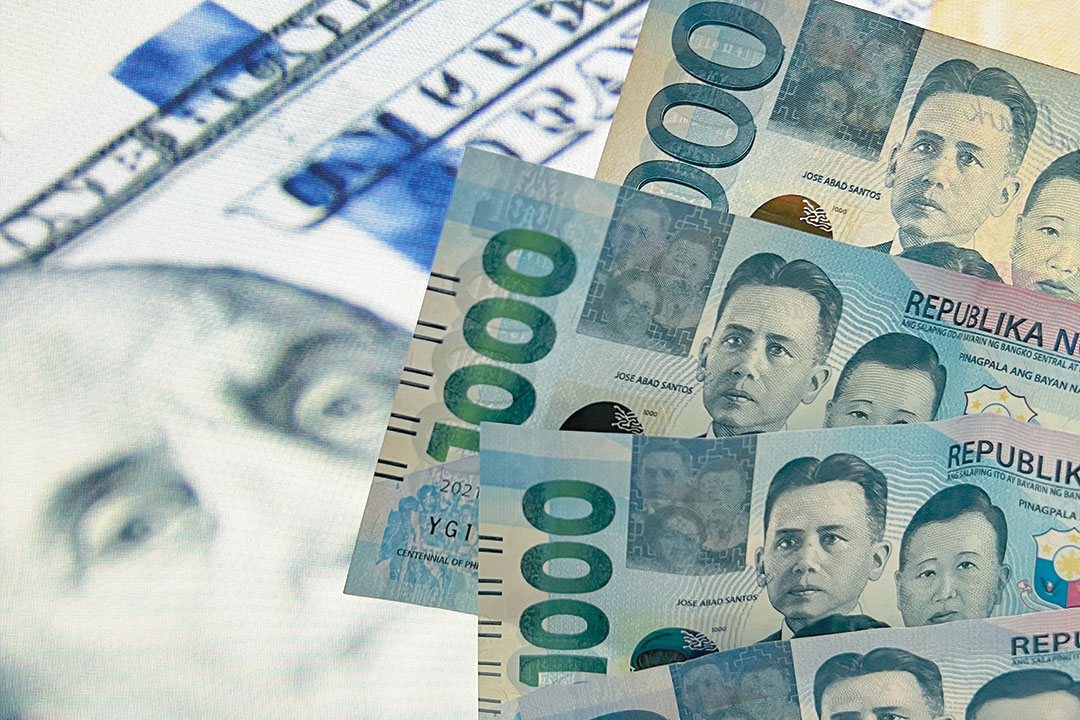Peso may be range-bound as markets eye Fed

THE PESO could move sideways against the dollar this week as markets await developments regarding the US Federal Reserve’s leadership amid reports that the Trump administration is now searching for a new central bank chief.
The local unit dropped back to the P57 level on Friday, weakening by 14 centavos to close at P57.11 per dollar from its P56.97 finish on Thursday, which was a two-week high.
Meanwhile, week on week, the peso jumped by P1.035 from its P58.145 close on Aug. 1.
“The dollar-peso closed a bit higher. The market initially reacted to the weaker dollar-peso overnight due to strengthened dovish Fed bets. However, strong buying interest ensued later on and rebounded to the high of P57.22, mainly due to profit taking and ahead of the weekend,” a trader said in a telephone interview.
The peso was also weighed down by data showing that the Philippines’ debt-to-gross domestic product (GDP) ratio hit a 20-year high in the second quarter, Rizal Commercial Banking Corp. Chief Economist Michael L. Ricafort said in a Viber message.
The government’s debt as a share of GDP was at 63.1% at the end of June, the highest ratio since 2005.
This was up from the 62% seen at end-March and the 60.9% posted a year earlier. It is also above the 60% debt-to-GDP threshold considered by multilateral lenders to be manageable for developing economies.
The government aims to bring down the debt ratio to 60.4% by the end of 2025 and to 56.9% by 2028 as part of its fiscal consolidation efforts.
For this week, the trader said markets will monitor any comments about the Fed from US government officials. “The market will await developments on the Fed’s staff and if they will get replaced as their independence is threatened.”
The trader sees the peso moving between P56.90 and P57.30 per dollar this week, while Mr. Ricafort expects it to range from P56.75 to P57.35.
The dollar firmed on Friday but was heading for a weekly fall as weakening economic data leads traders to price in the probability of more interest rate cuts this year, and as investors evaluate US President Donald J. Trump’s nominations to the US Federal Reserve, Reuters reported.
The dollar has dropped since the prior week’s jobs report for July showed employers added fewer jobs than expected during the month, while job gains from previous months were also revised down sharply. Other data including a weakening housing market and services sector data are also pointing to a slowing economy.
Mr. Trump on Thursday, meanwhile, said he will nominate Council of Economic Advisers Chairman Stephen Miran to serve out the final few months of a newly vacant Fed seat, while the White House seeks a permanent addition to the central bank’s governing board and continues its search for a new Fed chair.
Bloomberg News reported on Thursday that Fed Governor Christopher Waller, who voted for a rate cut in the Fed’s last meeting, is emerging as a top candidate to be the central bank’s next chair when Jerome H. Powell’s term ends in May.
Mr. Trump has pressured Mr. Powell all year to cut interest rates, building on his past comments critical of the Fed chief that emerged during his first term as president shortly after he elevated Mr. Powell to the Fed chair role. Mr. Powell’s term ends in May. Critics have said the president should let Fed chair Powell complete his term without interference.
Traders now see a 89% chance of a rate cut at the Fed’s September meeting, and are pricing in 58 basis points in cuts by yearend.
Mr. Trump also fired a top Labor department official on the heels of the weak jobs report, raising concerns that the Trump administration may have a larger influence over economic releases.
The dollar index nonetheless gained on Friday. It was last up 0.21% on the day at 98.19 but on track for a weekly loss of around 0.5%.
The next major US economic release will be consumer price data for July due on Tuesday, which will be watched to see whether tariffs are reigniting inflation pressures.
The Fed now faces risks to both its inflation and jobs goals, with policymakers needing to balance which seems the more serious threat in deciding whether it is appropriate to reduce interest rates, St. Louis Fed President Alberto Musalem said on Friday. — Aaron Michael C. Sy with Reuters



